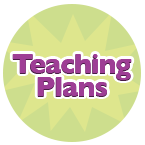Oral Language Teaching Strategy:
Model Eye Contact When Listening Model powerful listening by making eye contact with the person who is speaking to you.
Time: 20–25 minutes
Materials:
– The Little Turtle by Vachel Lindsey (Shared Reading big book from
Kindergarten Literacy Place for the Early Years)
– dog and girl puppet
–
pirate puppet and a girl or boy puppet
Grouping: whole class and partners
Assessment: Use selected items from the Kindergarten Oral Language Assessment Scale for recording your observations.
Teaching Tip: The Little Turtle is used for this lesson, but you can use any simple narrative (e.g., The Enormous Potato by Aubrey Davis or The Mitten by Jan Brett) substituting the characters and events during your demonstration lesson.
BEFORE MODELLING
I could use some of the ideas from The Little Turtle but instead of the turtle I could use a girl puppet and a dog. I’d need to change the story to fit the new puppet characters.
- Introduce the lesson’s focus on using puppets for substituting characters and events.
Setting a Purpose
- Establish the purpose for listening and viewing as you ask students to listen and watch as you use the new puppets to tell a story based on some of the new ideas from The Little Turtle, and to think about how the story is the same and how it is different.
DURING MODELLING
-
So, the dog jumped of a log, ran around trees, dipped his nose in the water, and then splashed into the pond… but he didn’t splash me!
Tell the story using the new puppets. Bringing a dog to the pond will change the events. For example, the girl brings her dog to the pond, who jumps over a log, runs around the edge of the pond, puts his nose in the pond and comes up with a water lily on it, and splashes into the pond.
AFTER MODELLING
-
Talk with your elbow partner adn decide what is the same and what is different when you think about me story compared with The Little Turle
Revisit the purpose for listening and viewing and ask students what they noticed about the similarities and differences. After partner discussion, ask a few of the students to share their ideas with the class.
- Model good eye contact as students share their ideas with you. As you listen to the partners discussing their ideas, provide positive feedback when you notice a student looking directly at another and listening carefully.
- Present a new scenario to the students and ask them to tell you what would happen if a child puppet took a pirate puppet with his boat down to the pond. Show the class the two puppets. (You might also have a small toy boat as a prop). Ask students to work in pairs and make up a new story.
I like the way that you looked right at Erica when she was telling you what the pirate did. That showed her you were paying attention to what she was saying.
Again, as the students create their story, reinforce good listening and making eye contact with their partners.
- Invite one or two partners to share their new stories with the class. They can use the pirate and child puppets for retelling.
-
Encourage students to make up new stories based on other stories during centre time. You might provide the Shared Reading big book and audio recording of Where Are the Bears? (see Kindergarten Literacy Place for the Early Years) Suggest that students use the adult and child puppets, a bear and moose puppets, and then have fun substituting the other animals to create a story where a lion, zebra, frog, and chicken may also live happily in the woods! If that is not available, use other simple, repeated action narratives that you’ve read with the class (e.g., Are You My Mother? by P.D. Eastman).
So instead of a deer what other character could you use? Would that change the story a bit?
